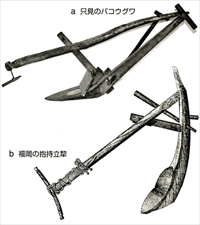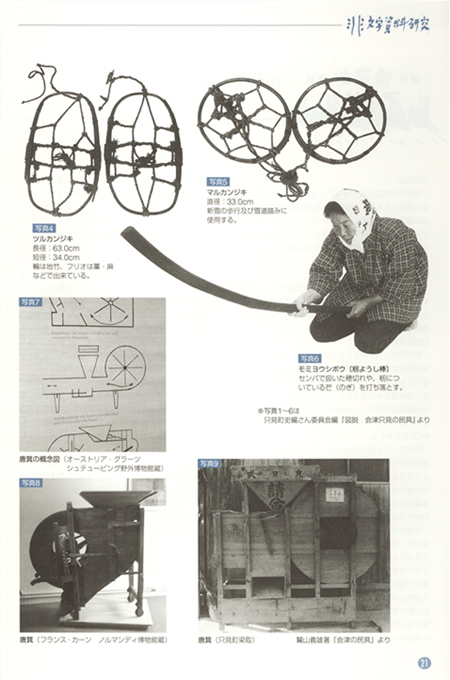- Home
- > Study Groups and their Achievements
- > Group 2: Overview of Arrangement and Systematization of Physical Techniques and Sensibility
- > Task 2
Study Groups and Achievements
Arrangement and Systematization of Physical Techniques and Sensibility
Task 2: Analysis of the Relationship between Tools and Human Movement
- Research Process
- │
- Research Results

Field studies in various parts of the Tohoku region revealed that spades were traditionally made by carving tree forks, while those brought to Japan by migrants from about 500 B.C. to 300 A.D. were made by inserting handles into spade heads. The former method had been proved to be common to the earliest inhabitants of Japan called Jomon-jin or forest dwellers. This finding verifies the hypothesis that a technique of body and senses of using wooden mortars in the upright position originates from the Jomon people, and will advance the reconstruction of the ethnic distribution of ancient Japan.

Through the comparative study of traditional plows, we found out that plows with straight shafts and long soles were standard in Nagao, Toyama, and Ishikawa prefectures in northern central Japan while those with triangular frames and no sole are common in Yamanashi Prefecture, west of Tokyo. Base on this research result, we can conclude that examining the shapes of plows is a valid method for gaining insight into 6th and 7th- century Japan.

